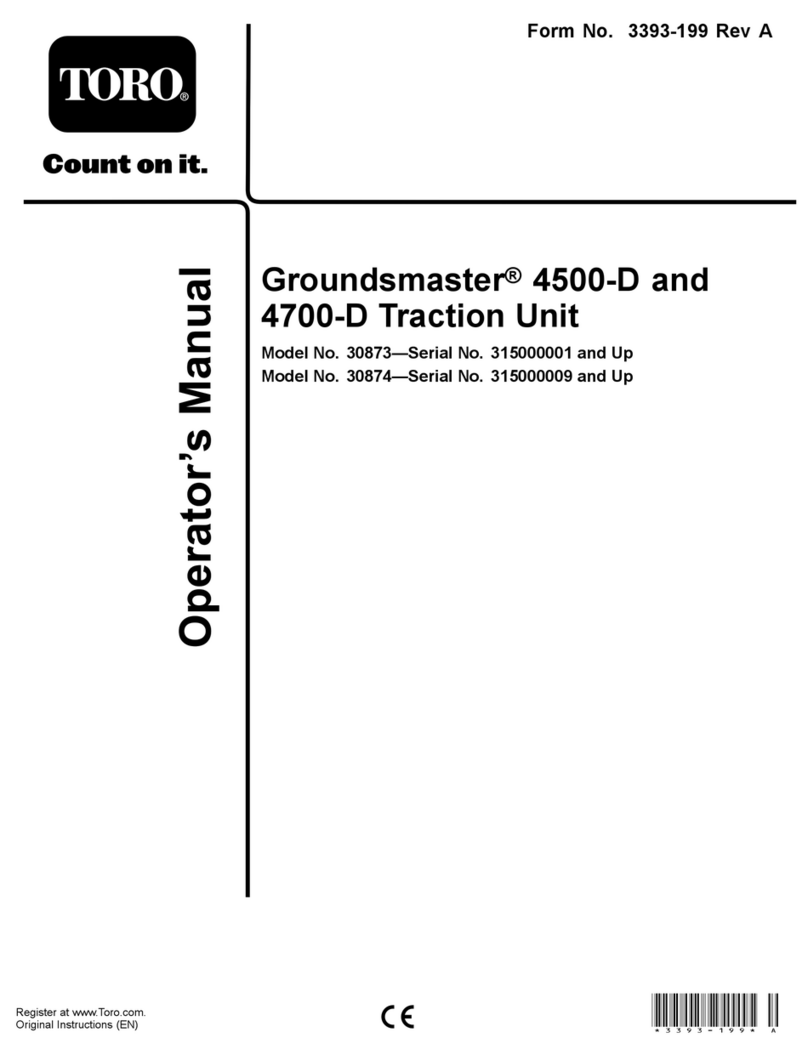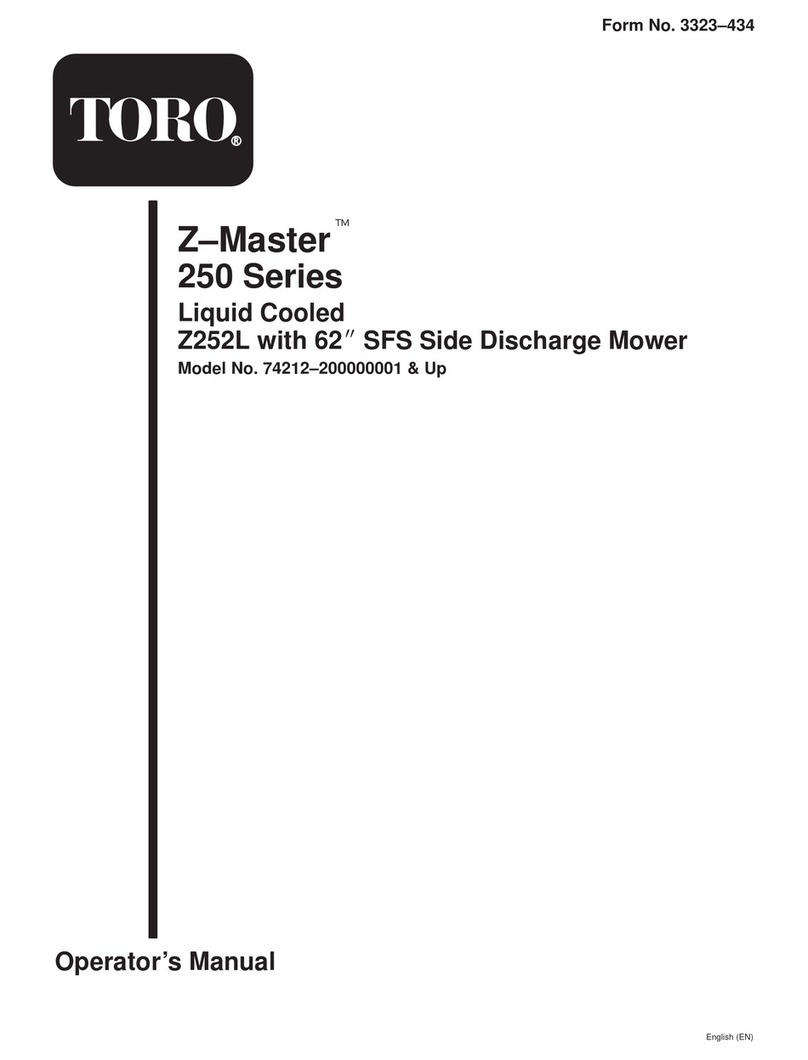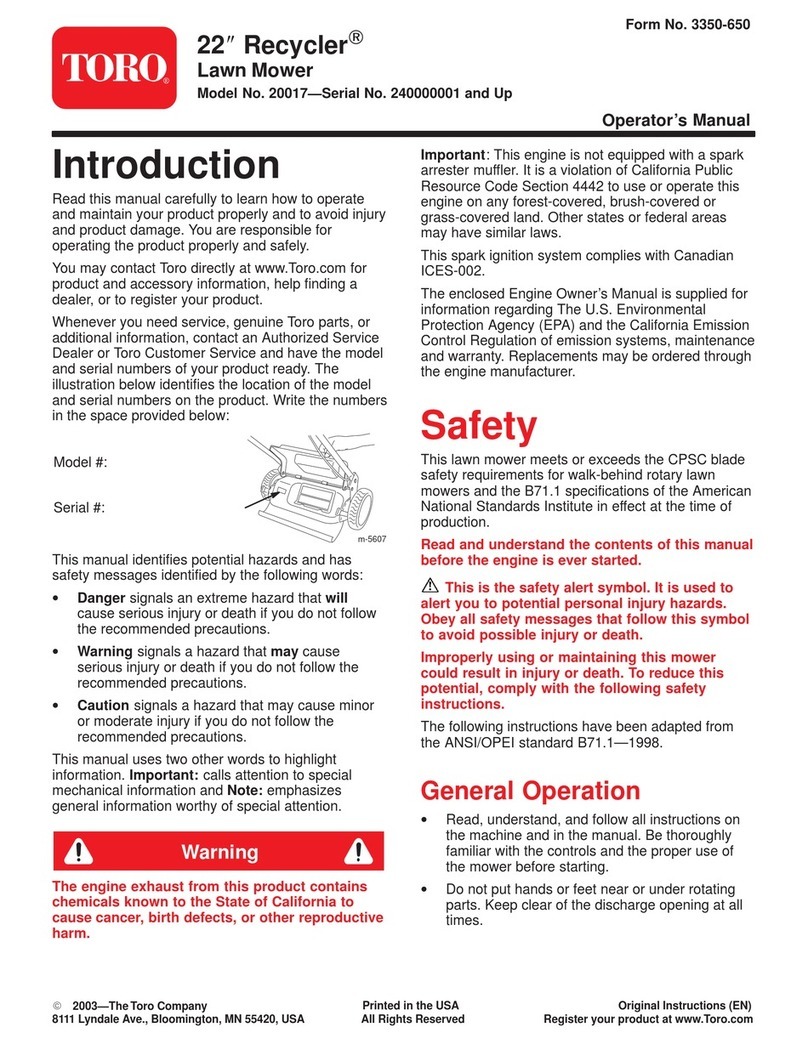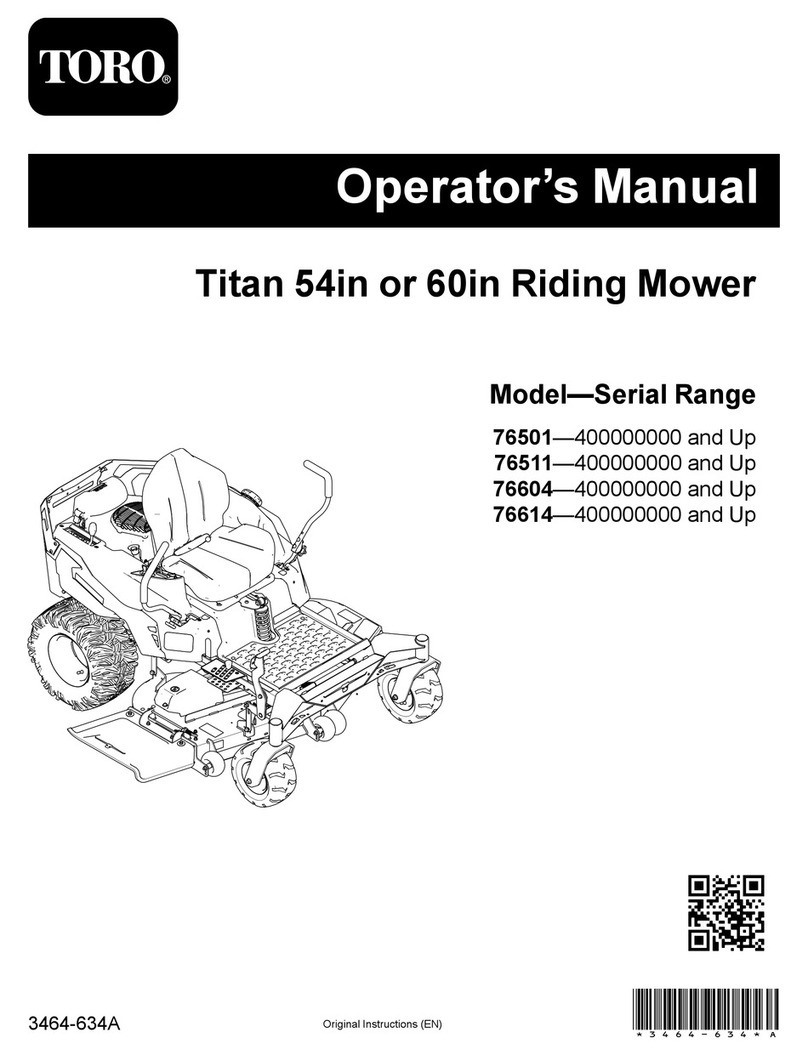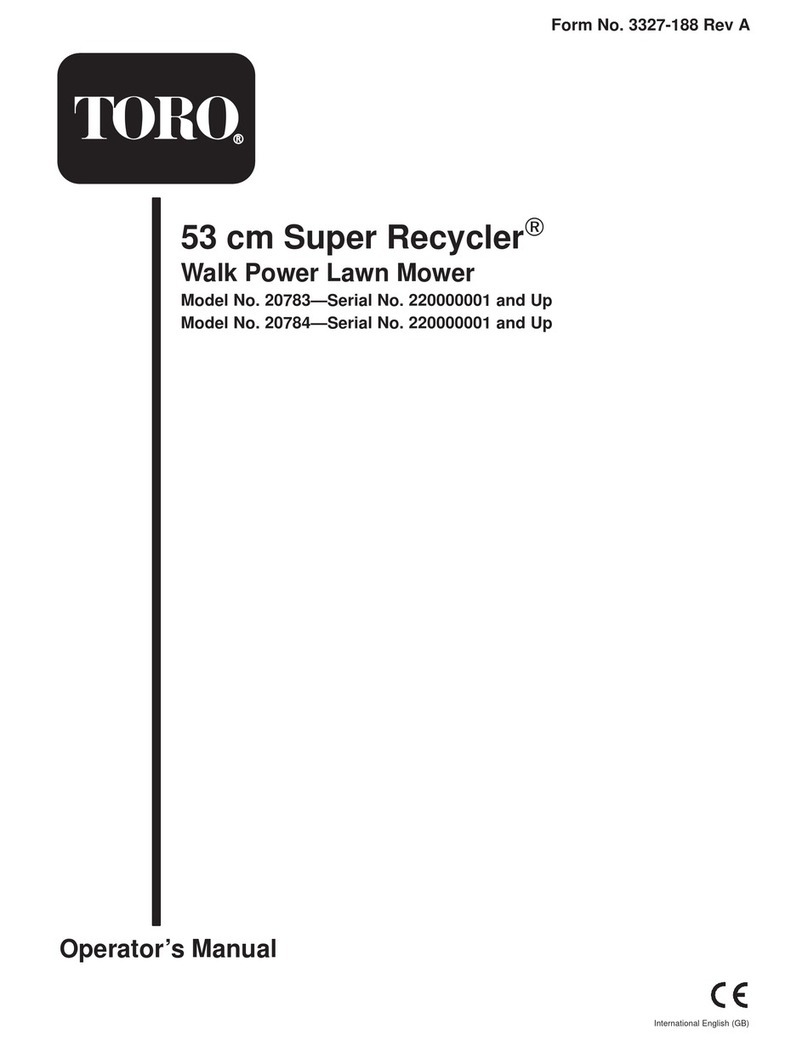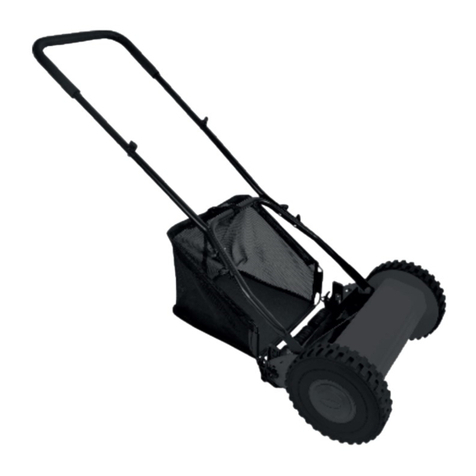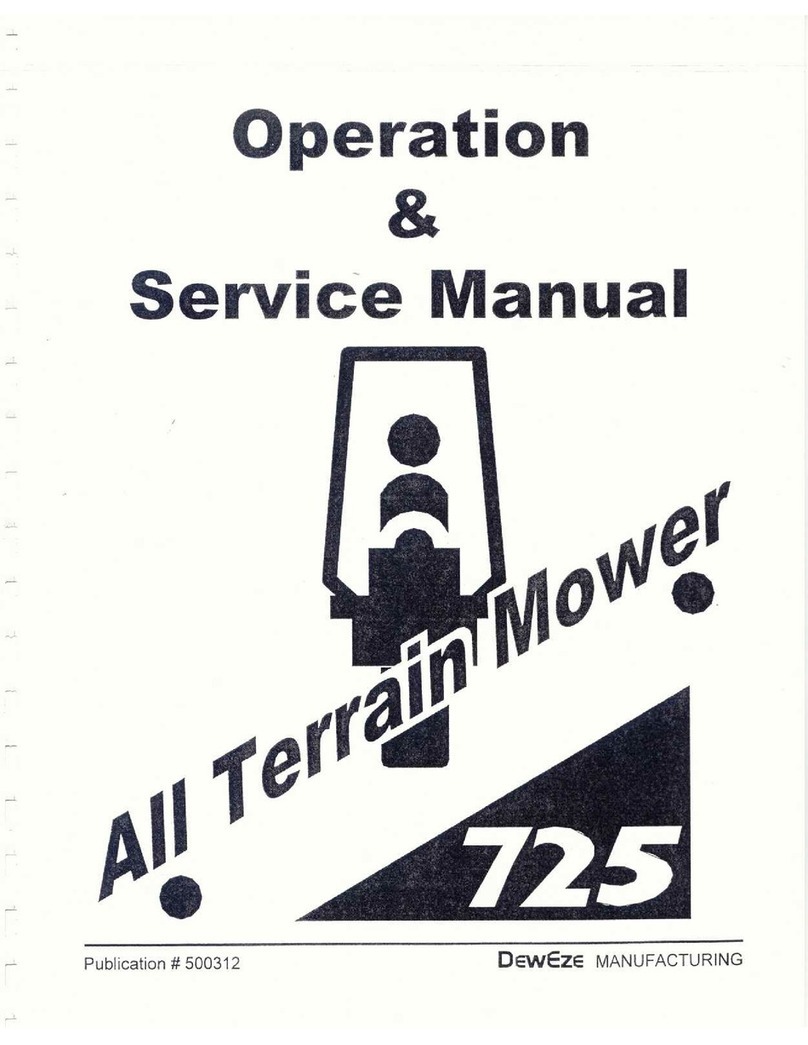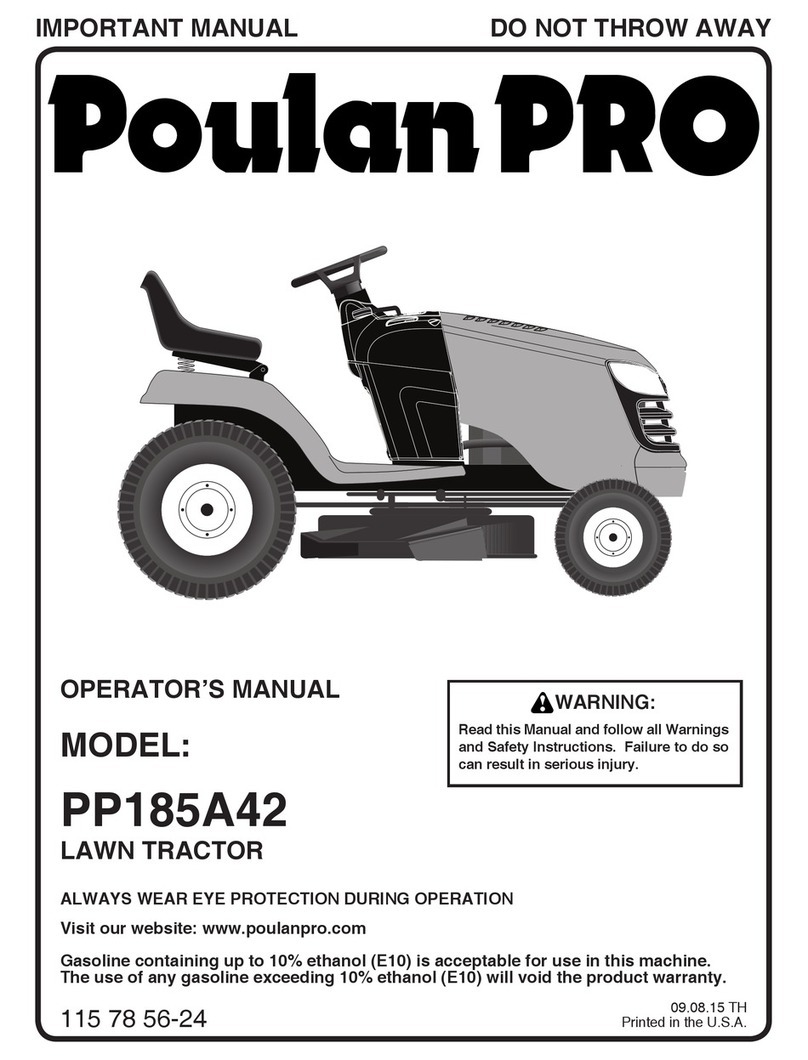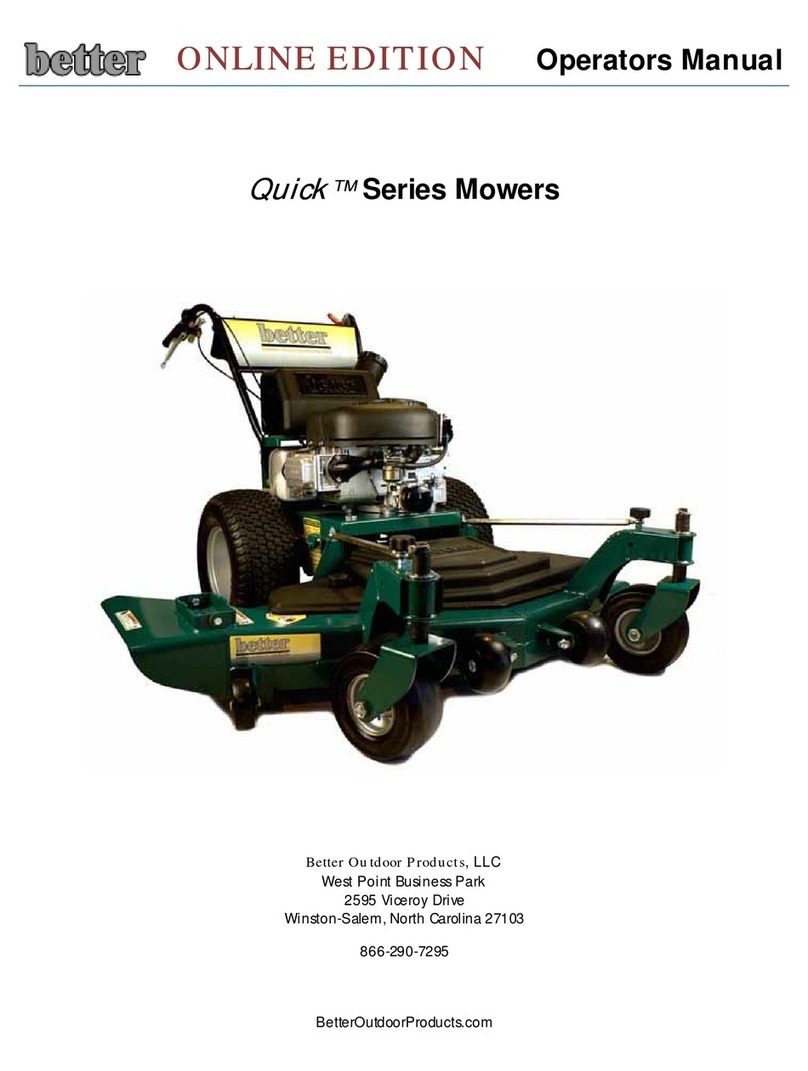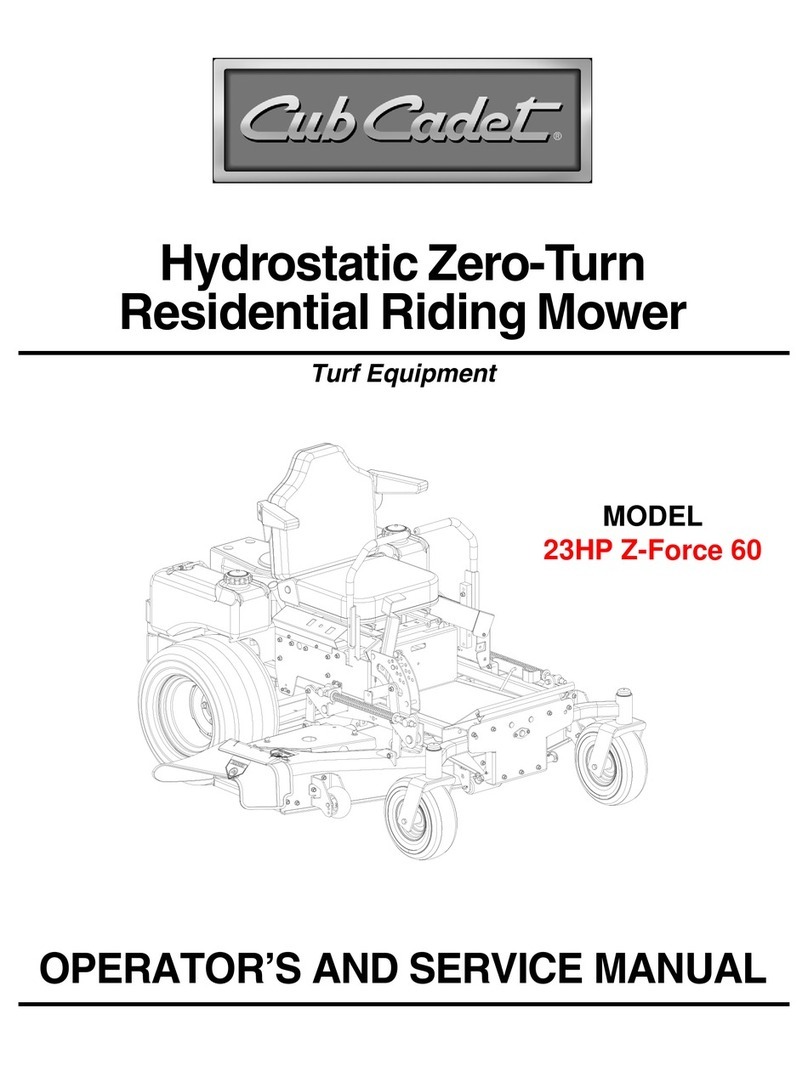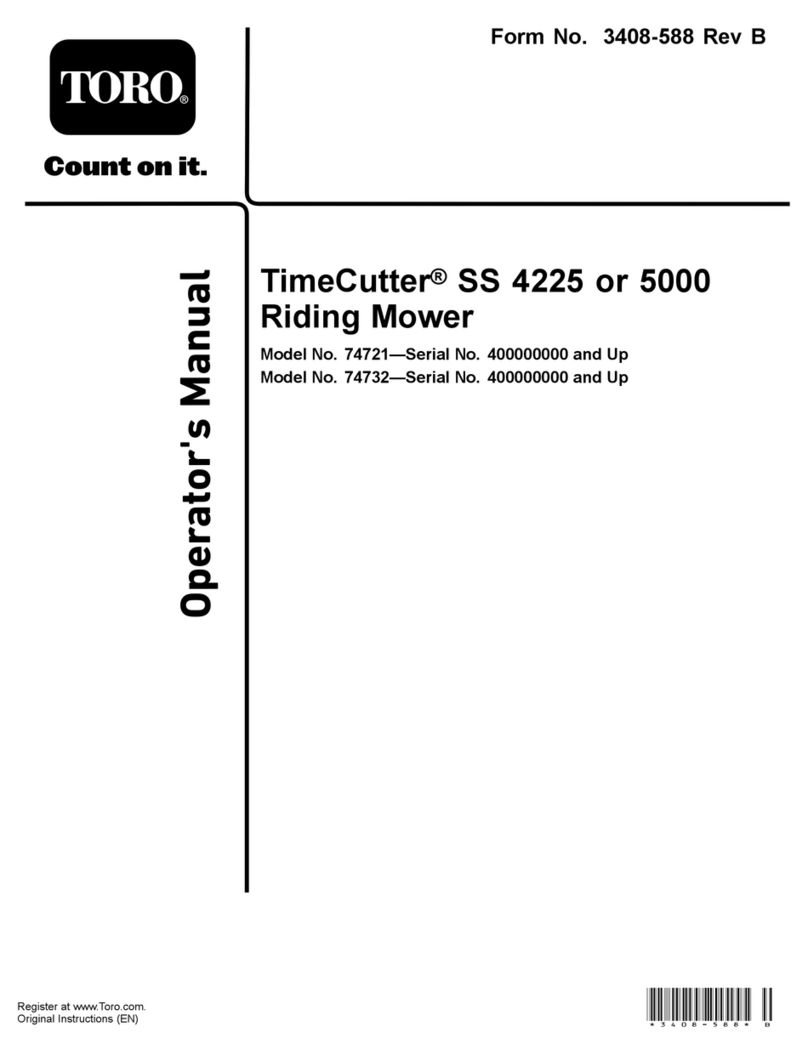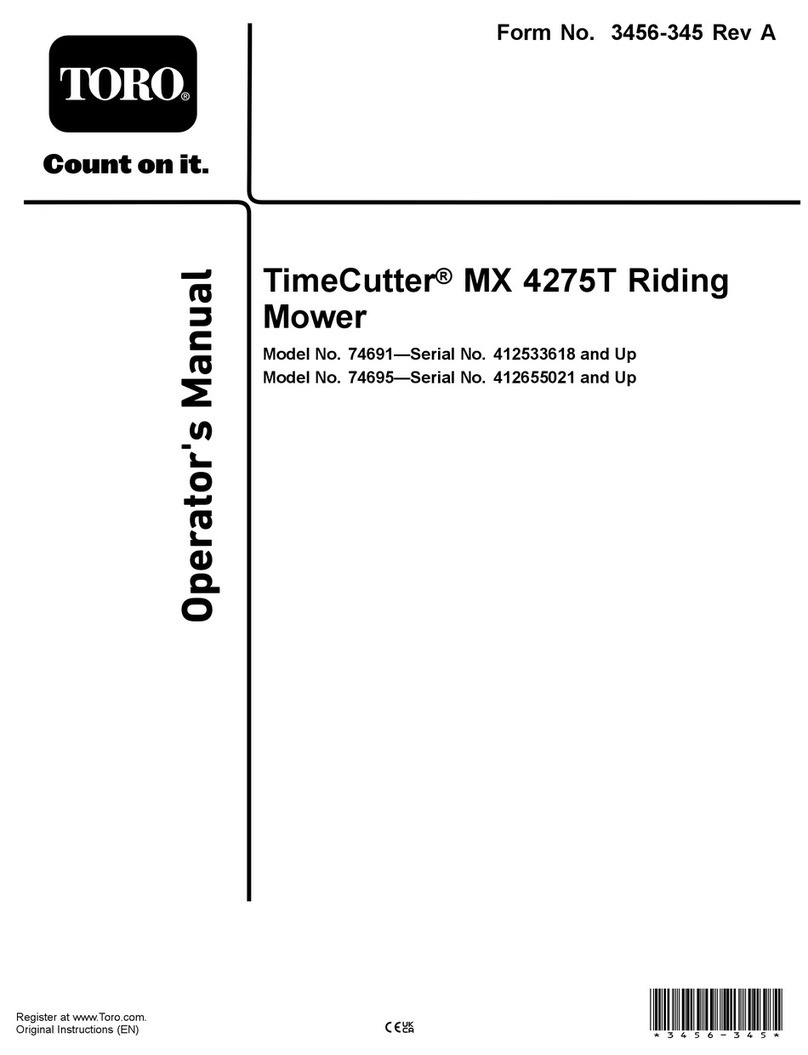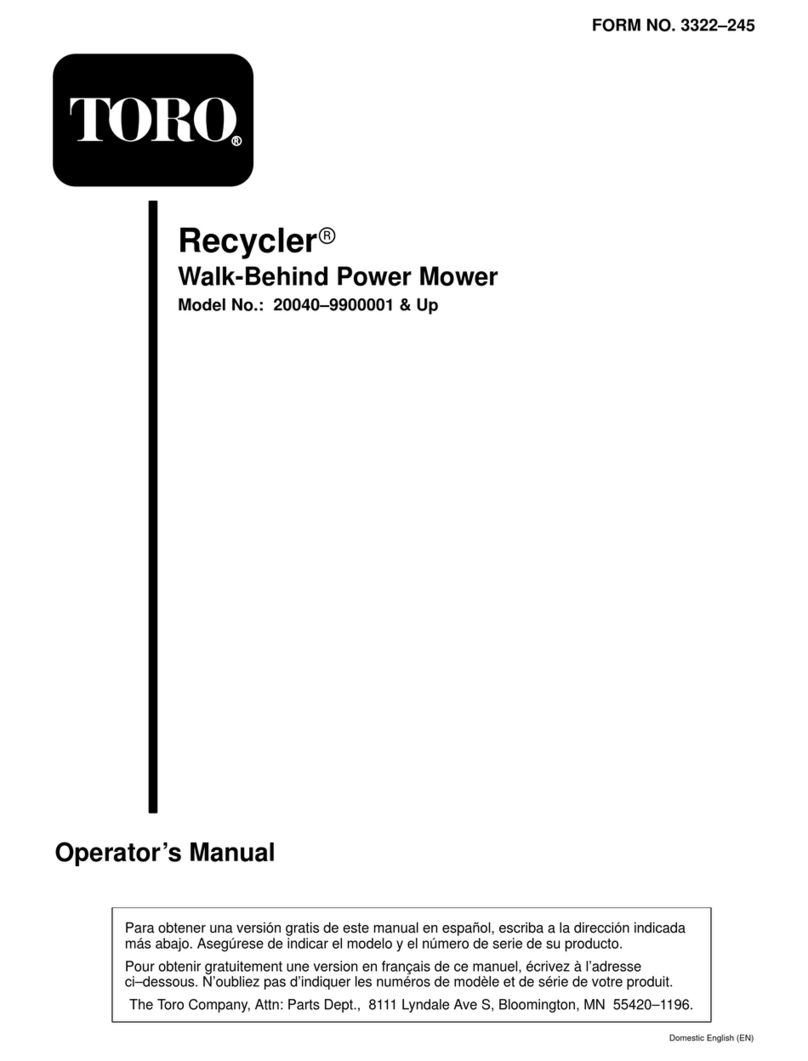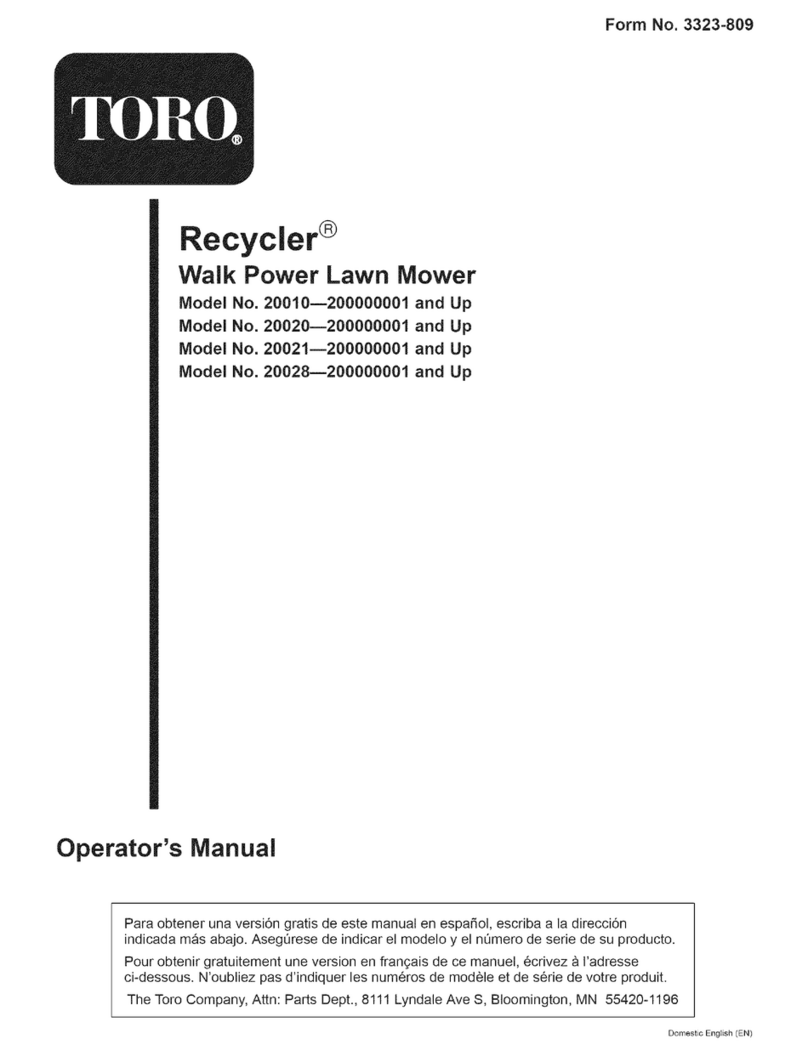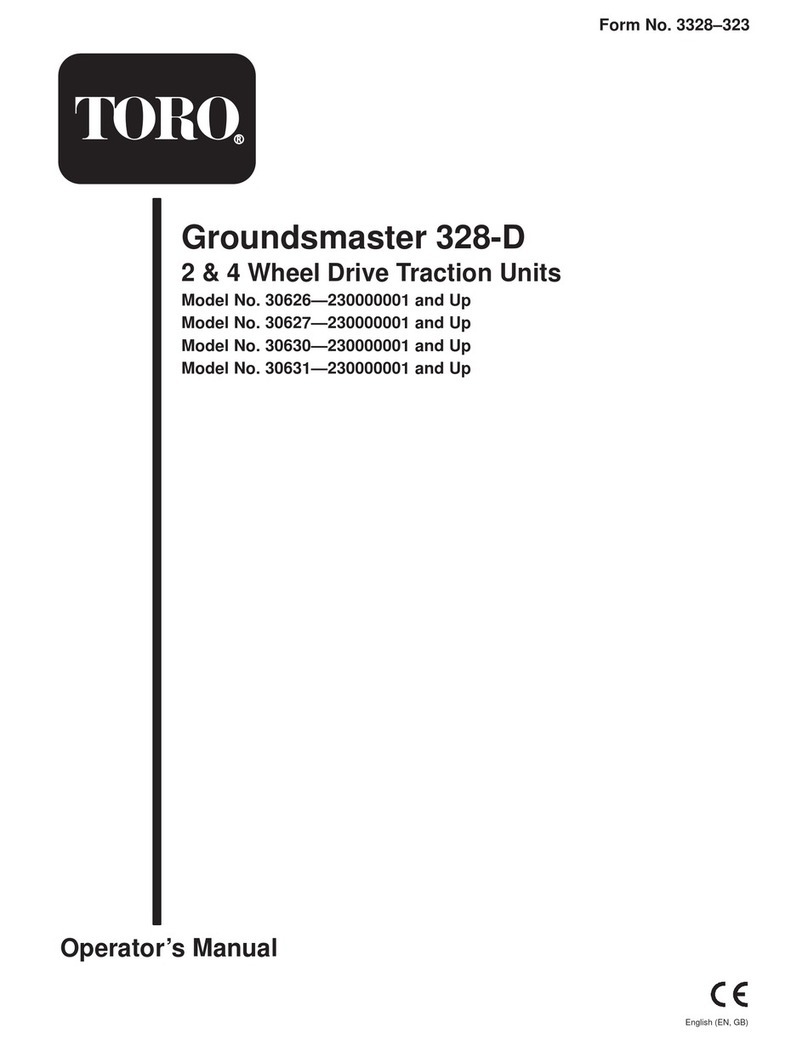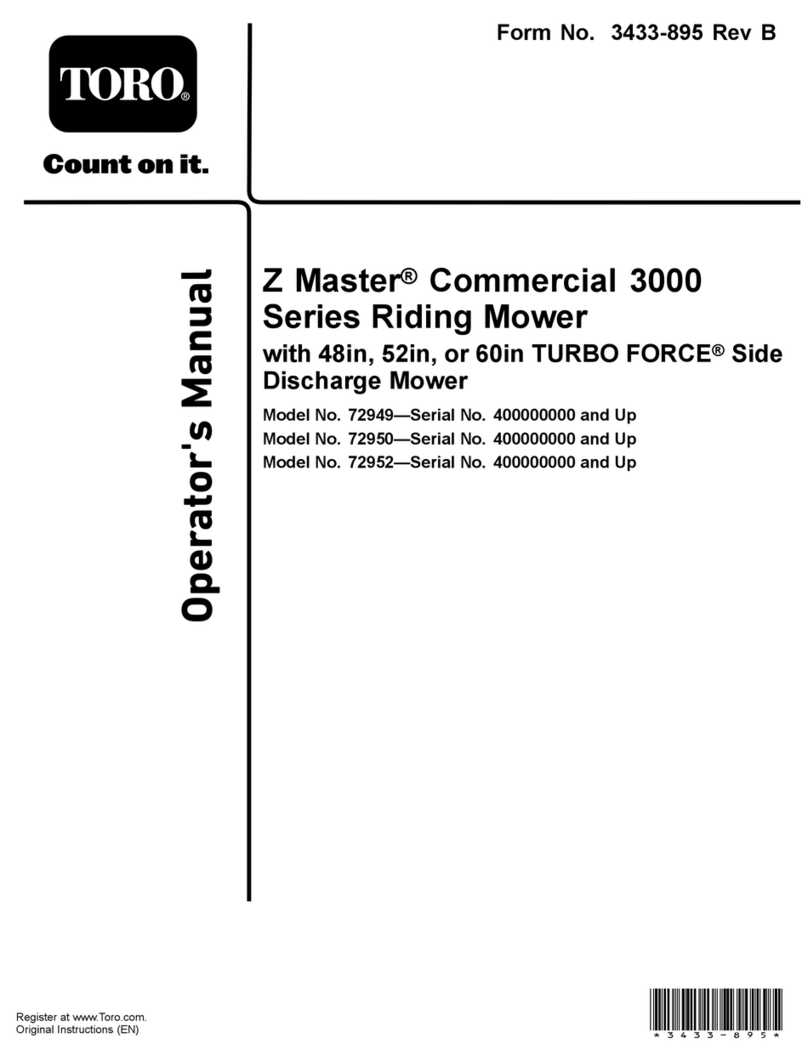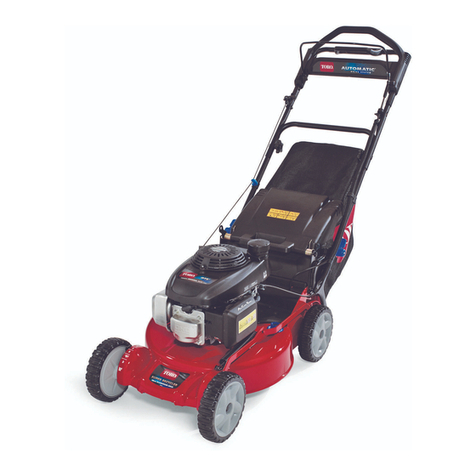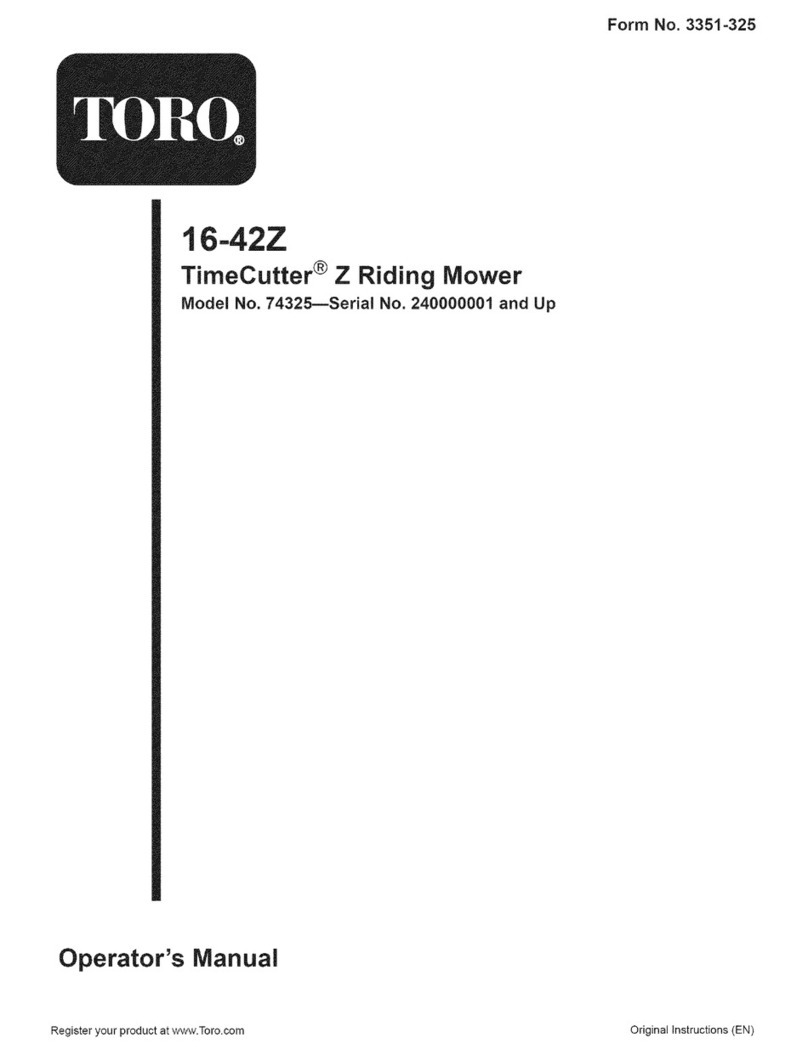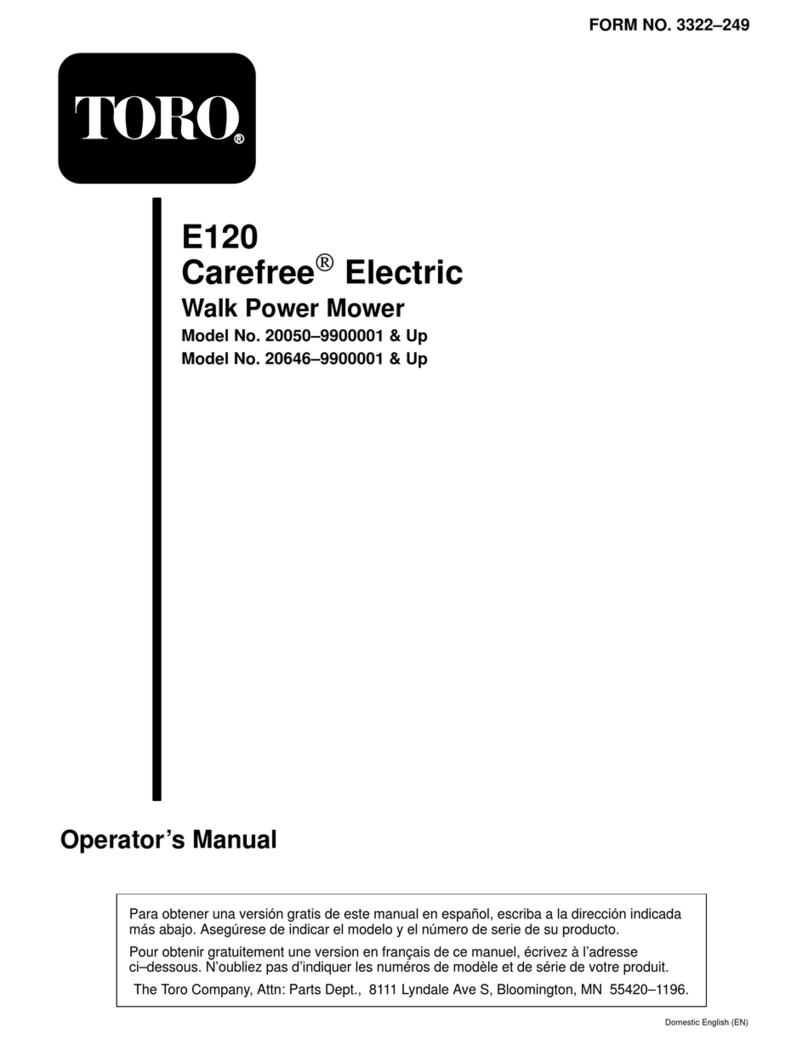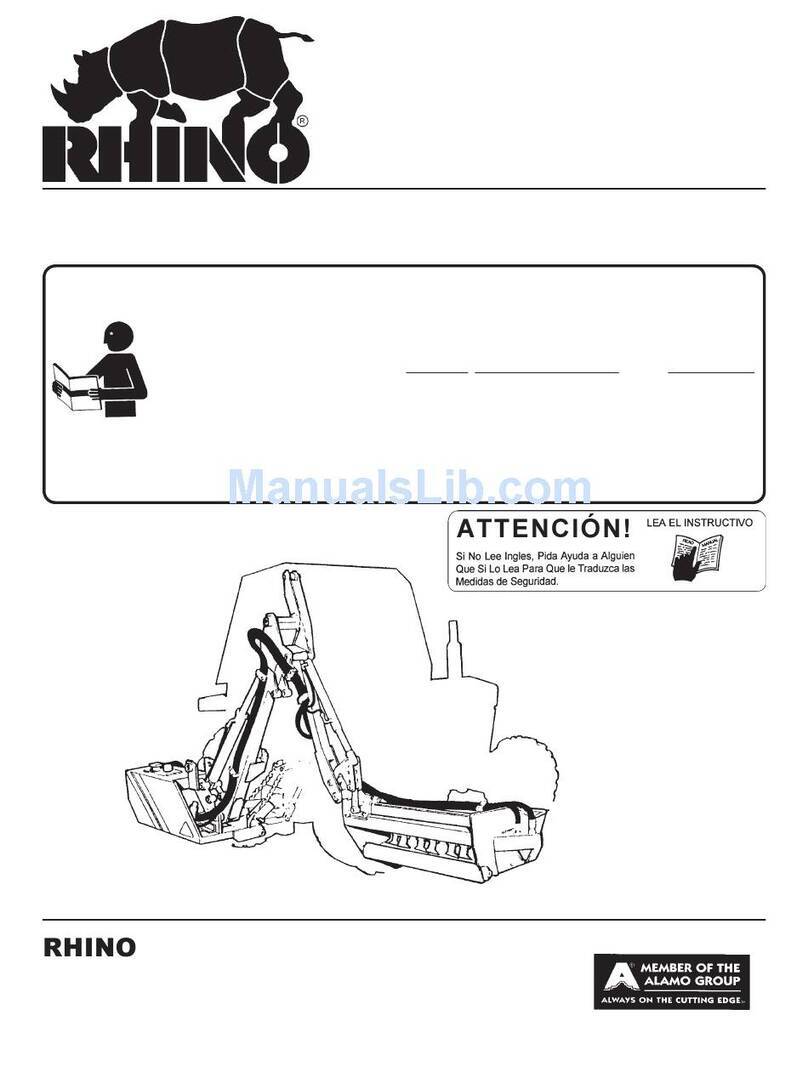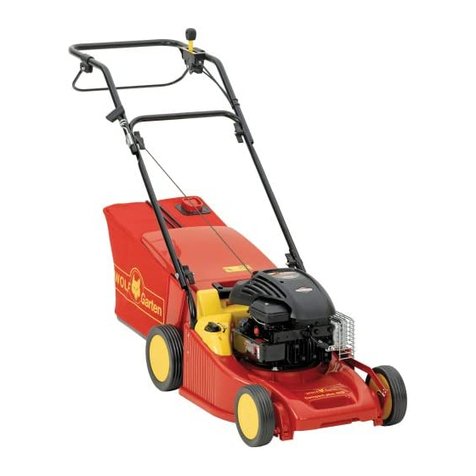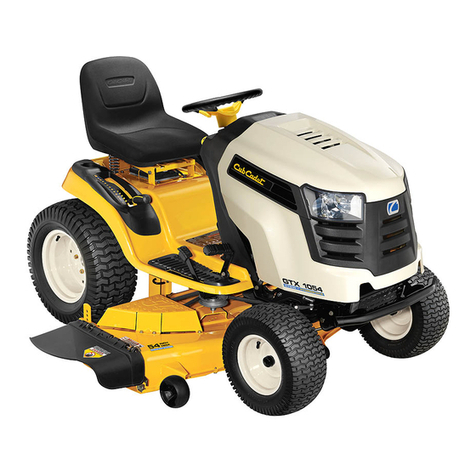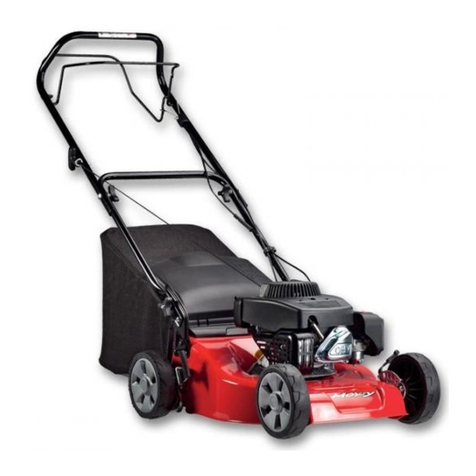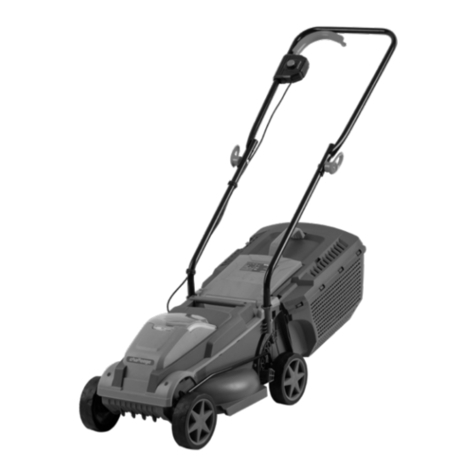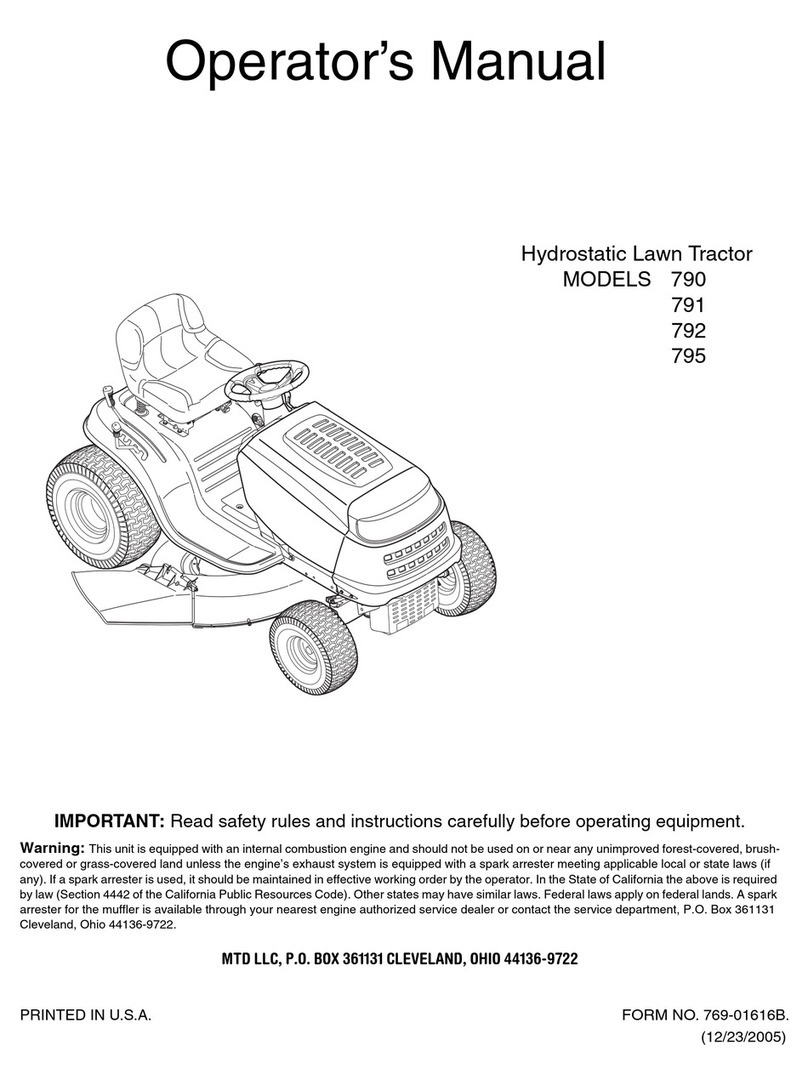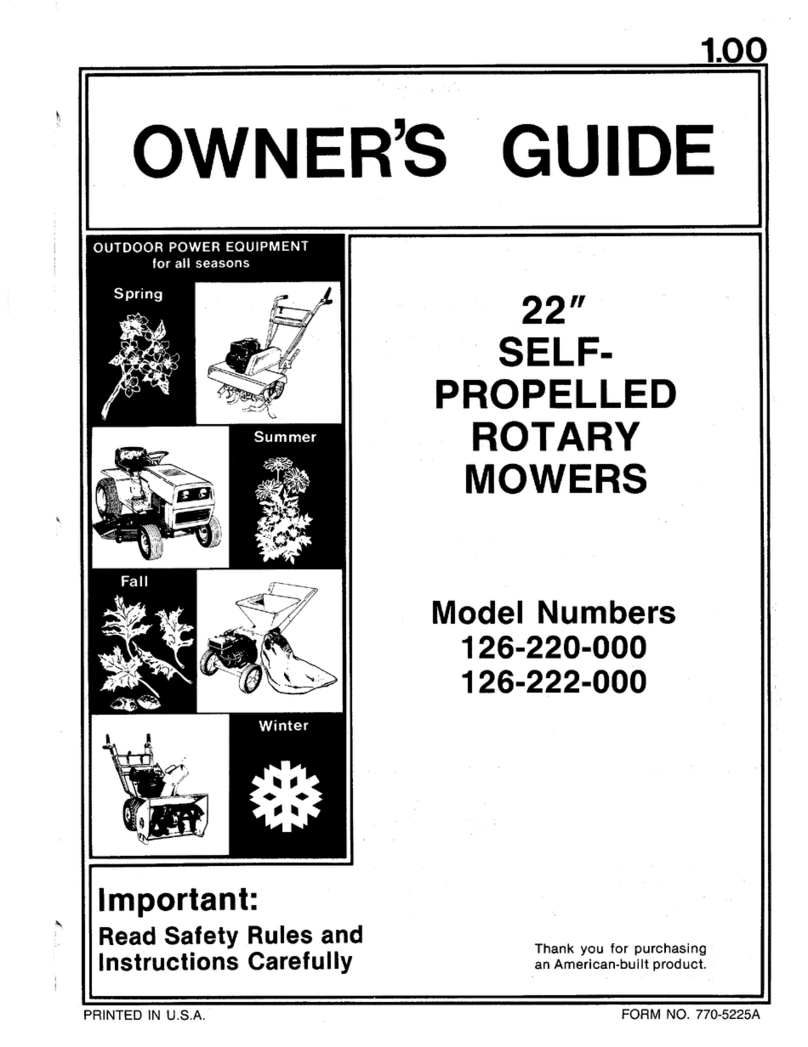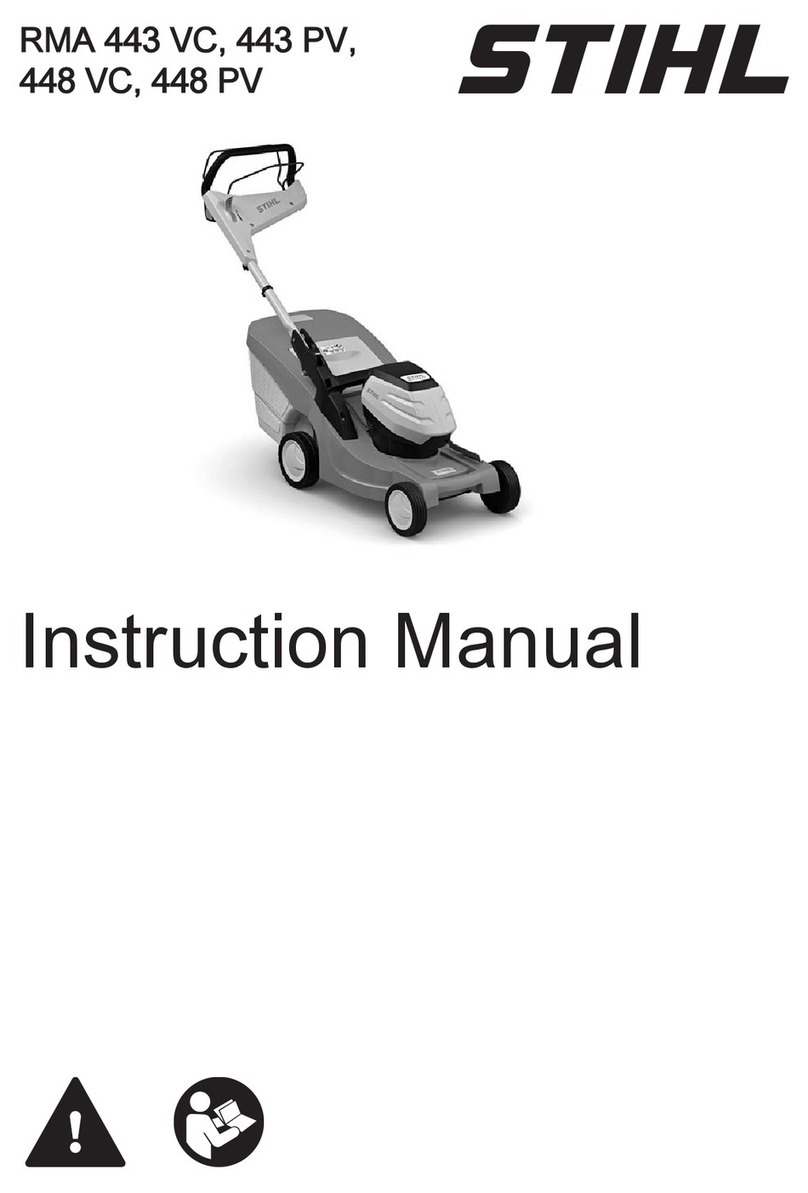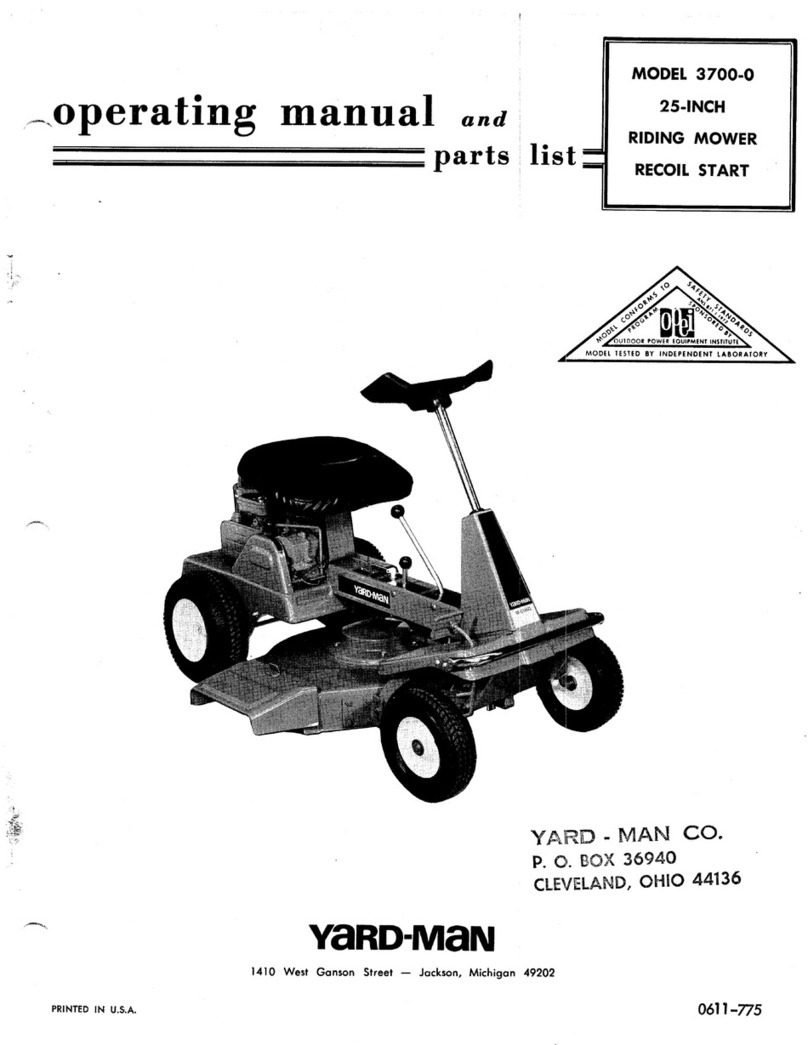
9
Engine: Peugeot TUD5, 4-cylinder, 4-cycle, in-
line, over-head cam, liquid cooled diesel engine
with centrifugal water pump. Available power, 25
kW at 2500 RPM. 1.5 liter displacement, governed
to a maximum speed of 2650 RPM. Compression
ratio 23.5:1. Glow plugs controlled by pre/post
heat relay. Oil capacity 4.75 quart (4.5 liters) with
the oil filter. 12-volt type 4 starter motor with inte-
gral solenoid. 70-amp type 7 alternator with inte-
gral regulator.
Fuel Tank Capacity: 45.4 l (12 gallons) diesel fuel
Radiator : Rear-mount industrial radiator with tube
and fin construction: 4 rows, 5 fins per inch.
Thermally stable water-cooled hydrostatic system
regulates operating temperature. Separate
degassing bottle removes air from cooling system
fluid. System capacity is 11.5 quarts (10.9 liter).
Controls: Hand-operated throttle, PTO switch,
hydraulic lift/lower/counterbalance of implement,
ground speed high/low range switch, ignition
switch. Foot-operated tilt steering locking lever,
traction pedal, steering/parking brake pedals.
Gauges and Diagnostics: Gauge package includes
fuel gauge, engine coolant temperature gauge, and
hour meter. Indicator light for high engine coolant
temperature, low engine oil pressure, alternator,
low engine coolant level, water in fuel, glow plugs.
Electrical Features: 12-volt automotive-type elec-
trical system. 650 cold cranking amp battery per-
formance at –18°C. Dash-mounted ignition switch.
70-amp alternator. PTO, seat and traction interlock
switches.
Transaxle/PTO: Sauer-Sundstrand integrated
hydrostatic transaxle (IHT-M15) incorporating the
hydrostatic transmission, mechanical gearbox, dif-
ferential, drive axle, power-take-off (PTO) system,
implement hydraulic system pump and reservoir in
a single component. Variable-speed, axial piston,
hydrostatic U-type transmission: gear-type charge
circuit hydraulics with filtration provides hydraulic
flow for power steering and implement lift. 11.8 l
(12.5 quart) oil capacity. Single foot pedal control
of forward/reverse ground speed. Two-speed axle
with “shift on the fly” speed range selection. Four-
wheel drive is mechanically driven from the front
axle by a universal shaft. Double overrunning
clutch provides four-wheel drive function in for-
ward and reverse, preventing rear tire scuffing in turns.
Both two-wheel and four-wheel drive have the same turning
radius. Optional cruise control available.
Implement Lift: Twin hydraulic lift cylinders (2.5" bore x
3.5" stroke) provide lift, lower and counterbalance of imple-
ment via an electrically-actuated hydraulic control manifold.
Steering: Eaton Series 2 steering control unit. The steering
valve controls a single steering cylinder. Steering system is
single tie-rod type which provides identical steering perfor-
mance on both two- and four-wheel drive versions. Tilt the
steering wheel with single lever control. 14" diameter steer-
ing wheel.
Ground Speed
Low speed - 0–138 kmh, infinitely variable
High speed - 0–24 kmh, infinitely variable
Clearance
Front ground clearance— 21 cm
Rear ground clearance— 2wd : 15 cm
4wd : 7.6 cm
Tires/Wheels/Pressures
Two front traction drive tires—25x10.5-15 turf tread, 6-ply
rating.
Two rear steering tires— 20x8-10, turf tread, 6-ply rating.
Tire pressure—103 kPa
Brakes: Individual mechanical caliper disc brakes provide
both independent application for steering assist and com-
bined application for parking brake function. Dynamic
braking through the hydrostatic traction drive.
Seat: Deluxe high-back seat. Optional seat suspension kit,
Model 30395, or deluxe adjustable suspension kit, Model
30396.
Storage: Toolbox with cover located to the left of the seat
base. Beverage holder integral to the toolbox cover.
Operator manual storage tube for attachment to seat frame.
Weight: 2wd—1930 lbs (875kg)
4wd—2030lbs (920kg)
Wheel Base: 139.7 cm
Tread Width: 134.6 cm
Specifications

